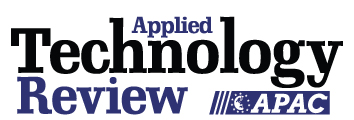THANK YOU FOR SUBSCRIBING

IoT Sensor Networking with Lorawan
Stacy Lacy, CTO, Invista

 Stacy Lacy, CTO, Invista
Stacy Lacy, CTO, InvistaStacy Lacy is the CTO for INVISTA, responsible for IT architecture and technology strategies. INVISTA is a global manufacturer of chemical intermediates, polymers, and fibers. From parts for the automotive industry to medical equipment, airbags, food packaging, and clothing, our ingredients in the nylon 6,6 and polypropylene value chains help bring many of life’s essential products to market. A subsidiary of Koch Industries since 2004, INVISTA is committed to innovation and responsibly creating more value for its customers and society while consuming fewer resources to make these products.
Rise of Low-Cost IoT Sensors
Low-cost sensors enabled by leveraging consumer technology, low-cost microcontrollers, and new connectivity options have the potential to transform industrial instrumentation dramatically. Established industrial instrumentation solutions are crucial for control, high bandwidth, and high-value data sources. However, the new low-cost sensor options, especially LoraWAN, can enable a whole new category of instrumentation where cost has been the traditional barrier. Instead of sensor costs of hundreds or thousands of dollars per unit with additional costs in management platforms and service plans, these new sensors can provide data points in the tens of dollars per unit, delivering data via an open protocol like MQTT (message queuing telemetry transport).
Additionally, the extended range of LoraWAN can provide coverage over large areas with modest infrastructure investment.
INVISTA is leveraging multiple categories of LoraWAN sensors to reduce operator rounds, provide new data for analytics, and enable new instrumentation use cases across our manufacturing facilities.
Basic Lorawan Architecture
To deploy LoraWAN devices in your environment, you need to address multiple layers of infrastructure, starting with Sensors, LoraWAN gateways, network connectivity, LoraWAN Network Server (LNS), and some method of integrating data into your applications such as MQTT Brokers or APIs. A high-level architecture is shown below.
Infrastructure Options
Determining how to manage this new LoraWAN networking landscape can be challenging. While there are many options, there are trade-offs to evaluate.
 End-to-End Vendor Solution If your expected number of sensors is limited to a few types available from a single vendor, you may be best suited for an end-to-end solution provided by the sensor vendor. In this case, your sensor vendor will provide gateways, often cellular connected, along with an application platform that provides the LNS, dashboards, alerting, and data analytics. The vendor may also offer an API that allows you to extract data for integrating with your other systems.
End-to-End Vendor Solution If your expected number of sensors is limited to a few types available from a single vendor, you may be best suited for an end-to-end solution provided by the sensor vendor. In this case, your sensor vendor will provide gateways, often cellular connected, along with an application platform that provides the LNS, dashboards, alerting, and data analytics. The vendor may also offer an API that allows you to extract data for integrating with your other systems.
While an end-to-end solution can be the fastest and easiest path to deploy, if your needs include sensors from multiple vendors, you can quickly run into redundant costs for basic LoraWAN infrastructure and the potential for spectrum conflict as the number of gateways grows.
"LoraWAN networking capabilities for IOT devices can open up new instrumentation and automation opportunities in industrial operations. Building knowledge of the options available to deploy these devices can help enable your operations transformation strategies"
Public LoraWAN Networks Multiple public LoraWAN network service providers exist globally. Depending on your location and site configuration, it may be possible to leverage a service provider to supply LoraWAN network connectivity across your sites, especially for mobile solutions with a low cost-per-message structure. This option will not apply if your site has no service provider coverage or the sensors you are deploying don’t support the existing networks.
Shared LoraWAN Infrastructure If you anticipate having many different types of LoraWAN sensors from multiple vendors, deploying your own gateways, LNS, and messaging platform may be advantageous. Many vendors provide these components either as a package or separately. Major cloud vendors, including AWS and Microsoft Azure, also have service offerings. Implementing your own infrastructure requires more technical expertise to build and deploy the platform and software but offers the most flexibility for addressing a broad set of use cases.
In conclusion, LoraWAN networking capabilities for IOT devices can open up new instrumentation and automation opportunities in industrial operations. Building knowledge of the options available to deploy these devices can help enable your operations transformation strategies.
Read Also








-450x308_tK8s.jpg)














ON THE DECK